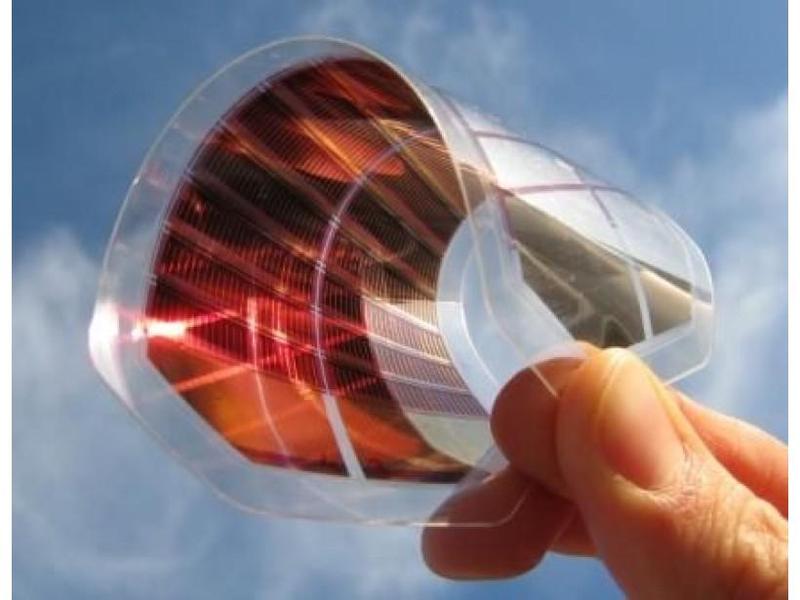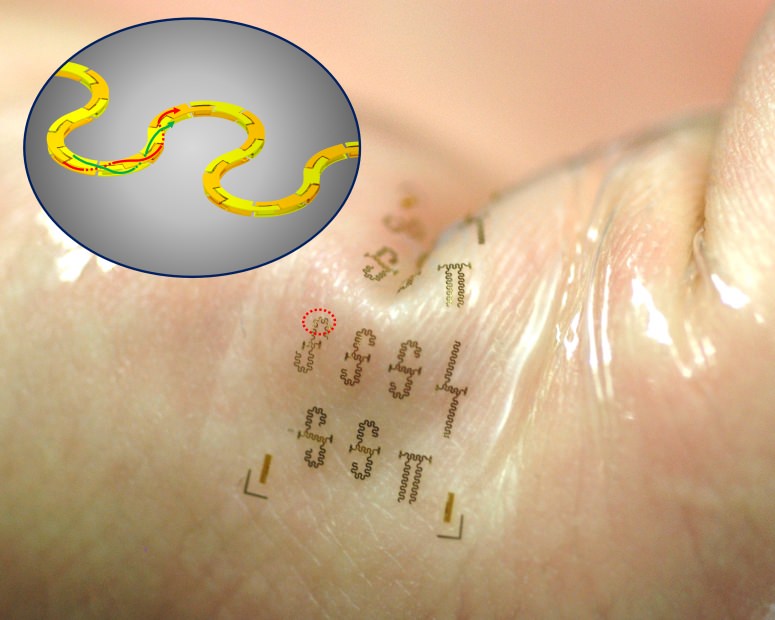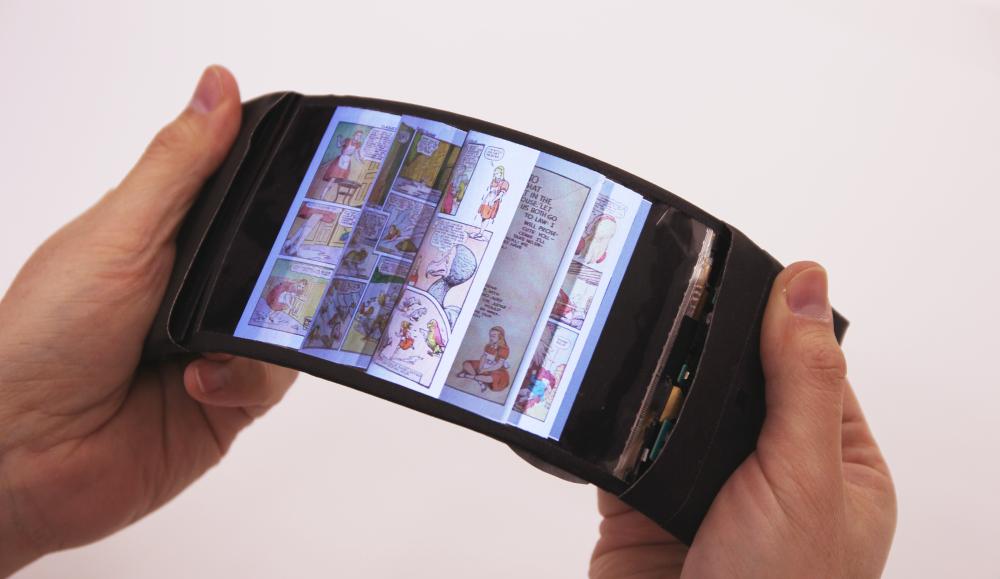
Flexible electronics ‘flex’ their muscles
What’s inside of all your electronic devices? If you didn’t already know, the answer is stiff and rigid components like circuit boards containing chips, resistors, and capacitors, all held together with wires.
That’s changing, though
Flexible electronics has been a recurring theme in the engineering industry as of late due to the technology’s potential to create a new generation of deices (that are now becoming a reality) that contain printed circuit boards and other parts that are still stiff, but also flexible, so that products can bend and fold.
Flexible electronics have been offering new possibilities in creating new concepts like bendable smartphones, flexible displays, and conforming photovoltaic cells.
The technology also provides the industry with the ability to reduce costs since leaders are working to print flexible electronics onto plastic film – the same way you would print a newspaper.

“If we could make flexible electronics cheap enough, you could have throwaway electronics. You could wear your phone on your clothing, or run a bioassay to assess your health simply by wiping your nose with a tissue,” said Enrique Gomez, an assistant professor of chemical engineering at Penn State who’s been working to transform the way we make and use electronics.
The evolving field of research regarding flexile electronics has seen a great deal of progress over the last 10 years.
The recent growth of nanomaterials such as carbon nanotubes, graphene, semiconductor nanowires, and nanofibers for flexible electronic applications has allowed for novel technology like large scale devices and circuitry, and flexible energy devices, such as solar cells and batteries.
According to Grand View Research, the flexible electronics is expected reach an estimated $87,210 million by the year 2024. The growth is expected to come as a result of the demand for new tech like smart glasses, e-books, smartphones, smart watches, and e-papers. In addition, as the style and functionality of wearable devices transitions, with companies such as Samsung, Apple, Nike and Google spending a lot of time focusing on this area, new avenues for discovering novel applications incorporating this technology will arise.
Breakthroughs
What’s facilitating the ability to actually say that flexible devices are a reality is the vigilant work on the part of research labs worldwide. For example, a team of engineers from the University of Wisconsin—Madison recently created the world’s fastest stretchable, wearable integrated circuits, which could advance the Internet of Things and help to create a much more connected, high-speed wireless world.

The stretchable integrated circuits possess a unique structure, inspired by twisted-pair telephone cables and contain two ultra-tiny intertwining power transmission lines in repeating S- waves.
Another major breakthrough comes from an international team that created a material capable of healing all of its functions automatically, even after breaking multiple times.
“Wearable and bendable electronics are subject to mechanical deformation over time, which could destroy or break them,” said Qing Wang, professor of materials science and engineering, Penn State. “We wanted to find an electronic material that would repair itself to restore all of its functionality, and do so after multiple breaks.”
The material is able to self-heal because boron nitride nanosheets connect to one another with hydrogen bonding groups functionalized onto their surface. So, when two pieces are placed near each other, the natural electrostatic attraction bonds the elements and brings them close together – in effect, causing “healing “.
In other recent flexible electronics news, a collaborative effort between researchers from the University of Illinois at Chicago and Korea University has resulted in a new material is that is highly conductive to electric current and can be bent and stretched without its properties being affected. The newly developed film can be formed via low cost method for flexible electronics.
So, where are all of the flexible devices?
Companies like LG and Samsung have been showing off concepts of foldable smartphones for a while now, and as some may have already heard, Samsung is said to actually be releasing a smartphone that bends by 2017, with a main challenge being reducing manufacturing costs, according to reports from Forbes. Lenovo also showed off two prototype devices at Lenovo Tech World 2016 in San Francisco in June.: the CPlus flexible smartphone and smartwatch and the Folio foldable tablet.
However, there are other, lesser known groups, making strides behind the scenes and developing bendable electronics prototypes.
One example is the team of engineers from Queens University’s Human Media Lab, that just introduced ReFlex, the world’s first bendable smartphone, earlier in the year. The team developed the world’s first full-color, high-resolution and wireless flexible smartphone to combine multi-touch with bend input. The phone would allow users to experience physical tactile feedback when interacting with apps via bending gestures. The phone was based on a high-definition 720p LG Display Flexible OLED touch screen powered by an Android 4.4 “KitKat” board mounted to the side of the display. Incorporated bend sensors behind the display can sense the force with which a user bends the screen, and that force is made available to apps for use as input.

While flexible screens are still in their infant stages (though still functional), the size of the screens are typically limited by the materials used for mass production, which can cause an increase in brightness as the size of the screen gets larger.
Researchers from the University of Exeter have now discovered an innovative new technique to make flexible screens more effective and efficient, which will be necessary as the technology is poised to hit the consumer market sooner or later. By substituting graphene for GraphExeter, the most transparent, lightweight and flexible material for conducting electricity, the team was able to create a lit screen that showed a far greater and more consistent light than has previously been possible. Their screens were also more resilient to continued flexing, so they would potentially possess a longer shelf-life before needing to be replaced.
The plethora of advances that are happening more regularly these days is demonstrating the true feasibility of flexible electronic devices that can find their way into not only everyday use, but also medical and energy fields.

Comments are closed, but trackbacks and pingbacks are open.